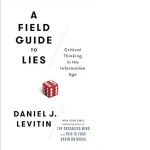Here’s a potential headline:
BOOK ON STATISTICS MAKES GRIPPING READING
Or, another:
COMMONLY USED SCHOOL METRICS MOSTLY USELESS
Or, one more:
LIFE STORY OF FUNNY MAN EXEMPLIFIES MORAL IMPERATIVE
These headlines, perhaps, leave you deeply skeptical. And yet, Todd Rose’s The End of Average fulfills them all. It may be the only book about a basic mathematical procedure that you start recommending to your colleagues.
BOOK ON STATISTICS MAKES GRIPPING READING
As a culture, we’re obsessed with averages: from IQ and GPA, to ERA and on-base percentage, to the Dow Jones and monthly unemployment.
Given the ubiquity of these calculations, it’s amazing to learn that an identifiable individual first decided to use scientific averaging procedures to draw conclusions about human social institutions. (It’s even more amazing to learn that his name was Adolphe Quetelet. This man should have invented potato chips.)
In the 200 years since Quetelet, some have seen the average as the ideal, and vilified variance from the average as a problem that schools and factories must solve.
Others—including Francis Galton, relative of Charles Darwin—have been champions of those who exceeded the average, exalting the eminent above the mediocre (and certainly above “the imbecile”).
In other words, there is a social history to our obsession with averages. It’s not a timeless norm of human societies, but a recent quirk in our social world view.
Improbably, Rose recounts this intellectual and social history with admirable clarity and welcome humor. I rarely lost my place in his argument, and regularly appreciated his wry observation and turn of phrase. When reading about the history of math, every Dante deserves so engaging a Beatrice.
COMMONLY USED SCHOOL METRICS MOSTLY USELESS
But here’s the catch in Rose’s engaging and witty story: when we use averages to describe people, the underlying mathematical assumptions go badly awry.
I’ll leave the details to Rose (who, by the way, does an impressive job making the “ergodic switch” clear to non-math readers).
The simple version is this; the rules governing mathematical procedures assume that human beings are like certain gas molecules: identical, and changeless. Of course, you don’t need too much experience as a teacher to know that our students are not immutable clones.
The horrifying implication: our obsession with IQ and GPA and countless other measurements that depend on averaging depends ultimately on a mathematical error. There’s a bug deep in the code we’ve been programming with all along.
Here’s an analogy—adapted from Rose’s introduction. The last time you rented a car, you probably spent a few minutes adjusting all sorts of settings. You moved the seat up and back, tilted the steering wheel, rejiggered the mirrors—even before you got to the radio and the AC.
Of course, car makers would be much happier if they could dispense with all these adjustments; that is, if they could build a car for the average driver. But they (or, as Rose explains, the Navy) have found that no such driver exists. Even if you knew that a driver is 5’ 10”, you still can’t make good predictions about the right height for the steering wheel, or the proper tilt for the headrest…much less the best temperature for the car.
And yet, IQ tests assume, in effect, that all students can comfortably drive the same car. If their driving is faulty, the problem resides in the driver, not in the car itself.
Other books in this field offer specific teaching strategies. Instead, Rose offers readers a new way to think about information we already have. The uses of these new thought processes will be different for each of us.
If, for example, your school uses IQ scores or GPA as a prerequisite for advanced tracks or classes, you’ll know how to think about these criteria in the future.
If, on the other hand, you’re designing a new class, Rose’s frameworks will doubtless inspire you contemplate course requirements anew. His final three chapters, in fact, offer models for rethinking old systems to allow for complex individuality.
Alas, Rose’s examples don’t come from K-12 schools; we will have to do that work ourselves. At the same time, we can be more effective in rethinking approaches to teaching given Rose’s wisdom and guidance.
LIFE STORY OF FUNNY MAN EXEMPLIFIES MORAL IMPERATIVE
More than most books on science, Rose presents his own life story as a central example of his hypothesis.
In many ways, his biography resembles a cautionary tale about bad choices and misspent opportunities. After a series of failures in high school, he ended up on welfare—with a wife and two children to support.
And yet, Dr. Todd Rose is now the Director of the Mind, Brain, Education program at Harvard University’s School of Education—and the author of a book published by Harper Collins. He has, in brief, made it.
His remarkable story points to two key moral arguments.
First: as a society, our schools cheat many who don’t fit within “averagarian” norms. Clearly Rose has what it takes to succeed—the man is, after all, a Harvard professor. And yet, our education system didn’t facilitate his success; it routinely impeded that success.
We simply can’t feel good about social systems that block capable people.
Second: as a society, we cheat ourselves by limiting the successes of promising students. Think of all the other Todd Roses out there who were not able to overcome the hurdles our system placed before them. Think what they might have invented and accomplished and discovered—for us.
In other words: Rose’s desire to see past faulty “averagarian” thinking is not some dewy-eyed project to make do-gooders sleep cozily. Instead, it is an utterly rational appeal to our sense of justice and of logic. If we can take off our social blinders, we will benefit not only those who need non-average systems to thrive, but also ourselves, our students, our families, and our world.
Todd Rose (2016). The End of Average: How We Succeed in a World that Values Sameness. New York: HarperOne.
Full Disclosure: I took one course under Dr. Rose in the MBE program at Harvard’s School of Education.





Fascinating.